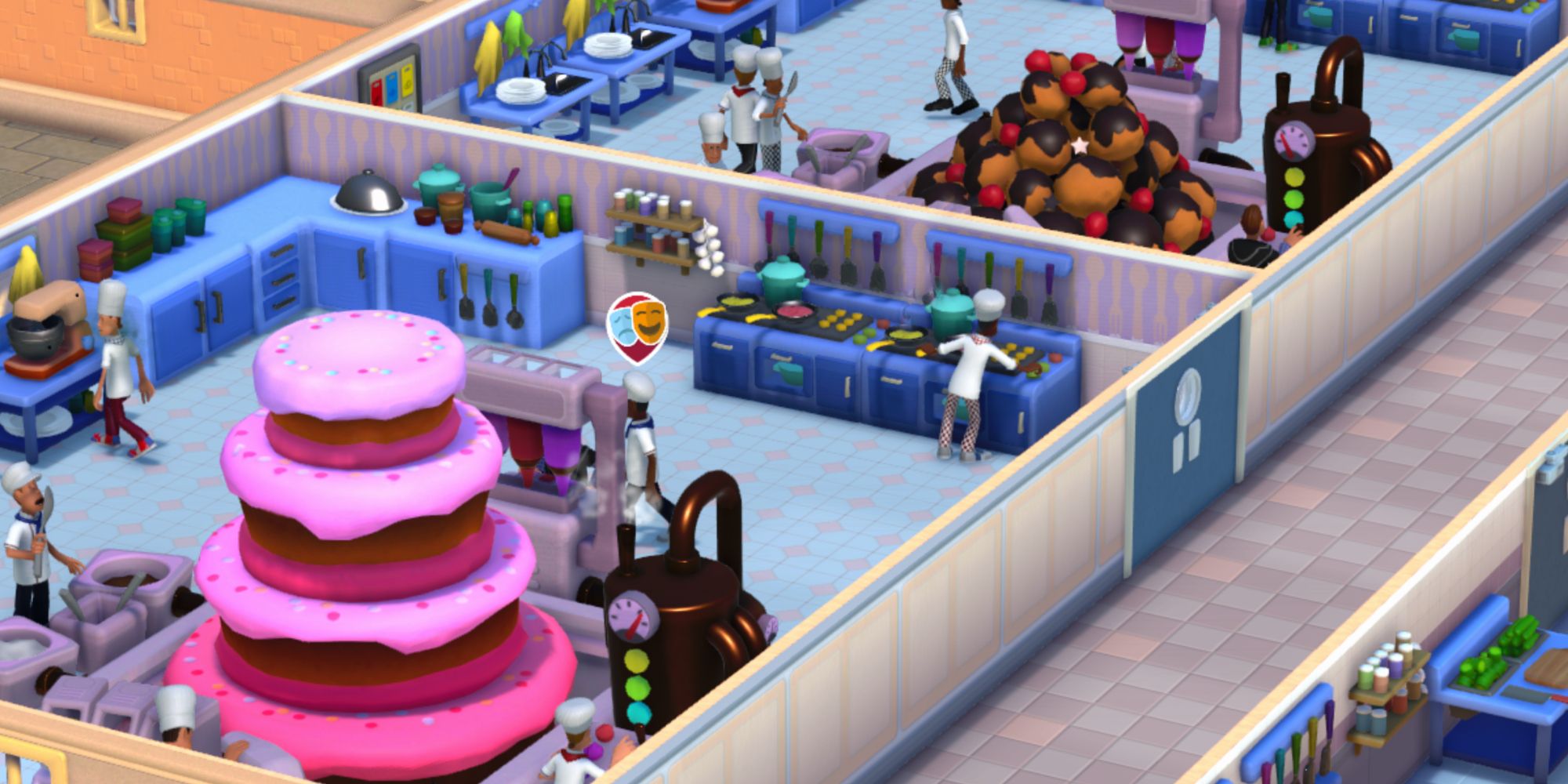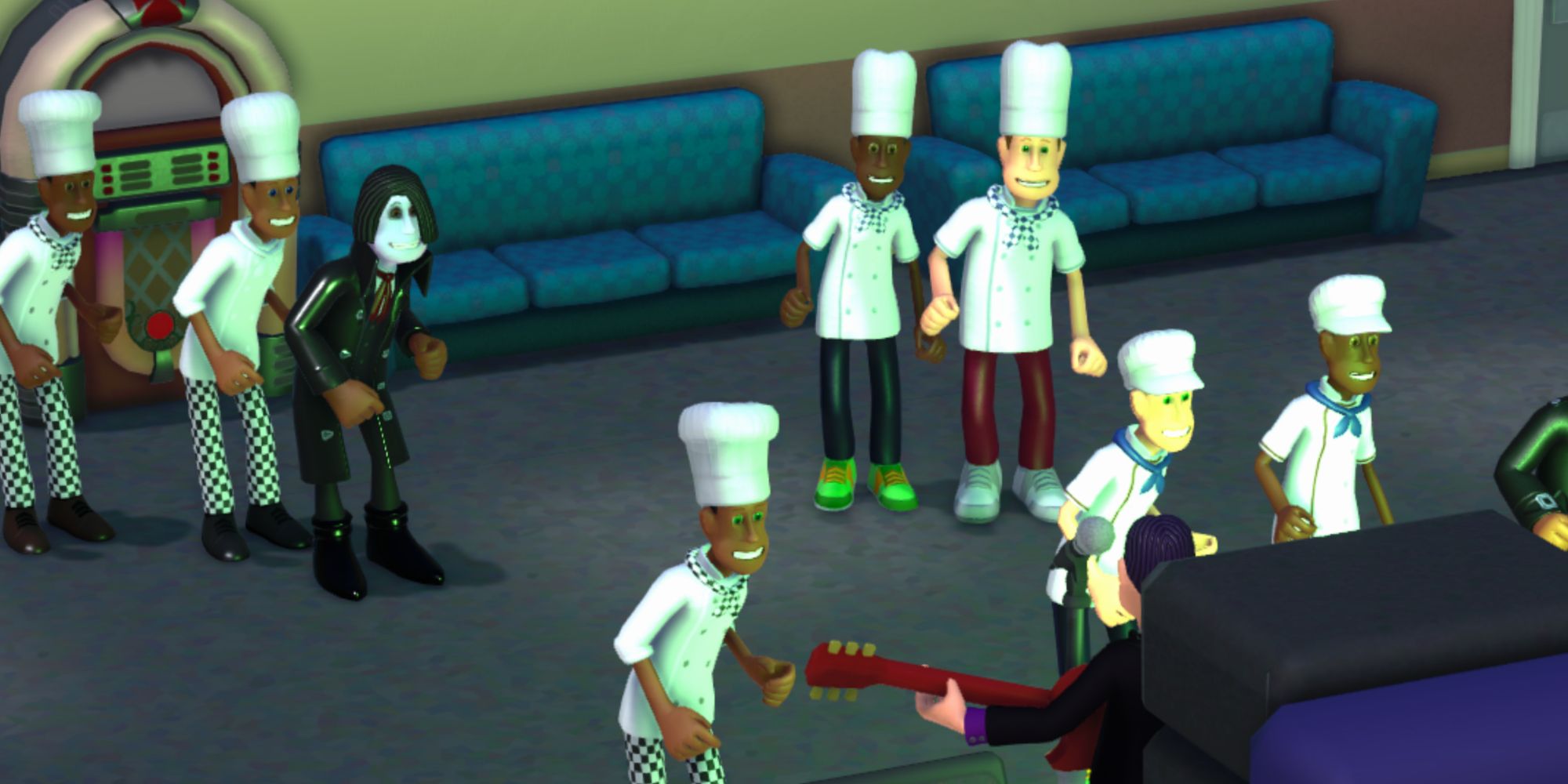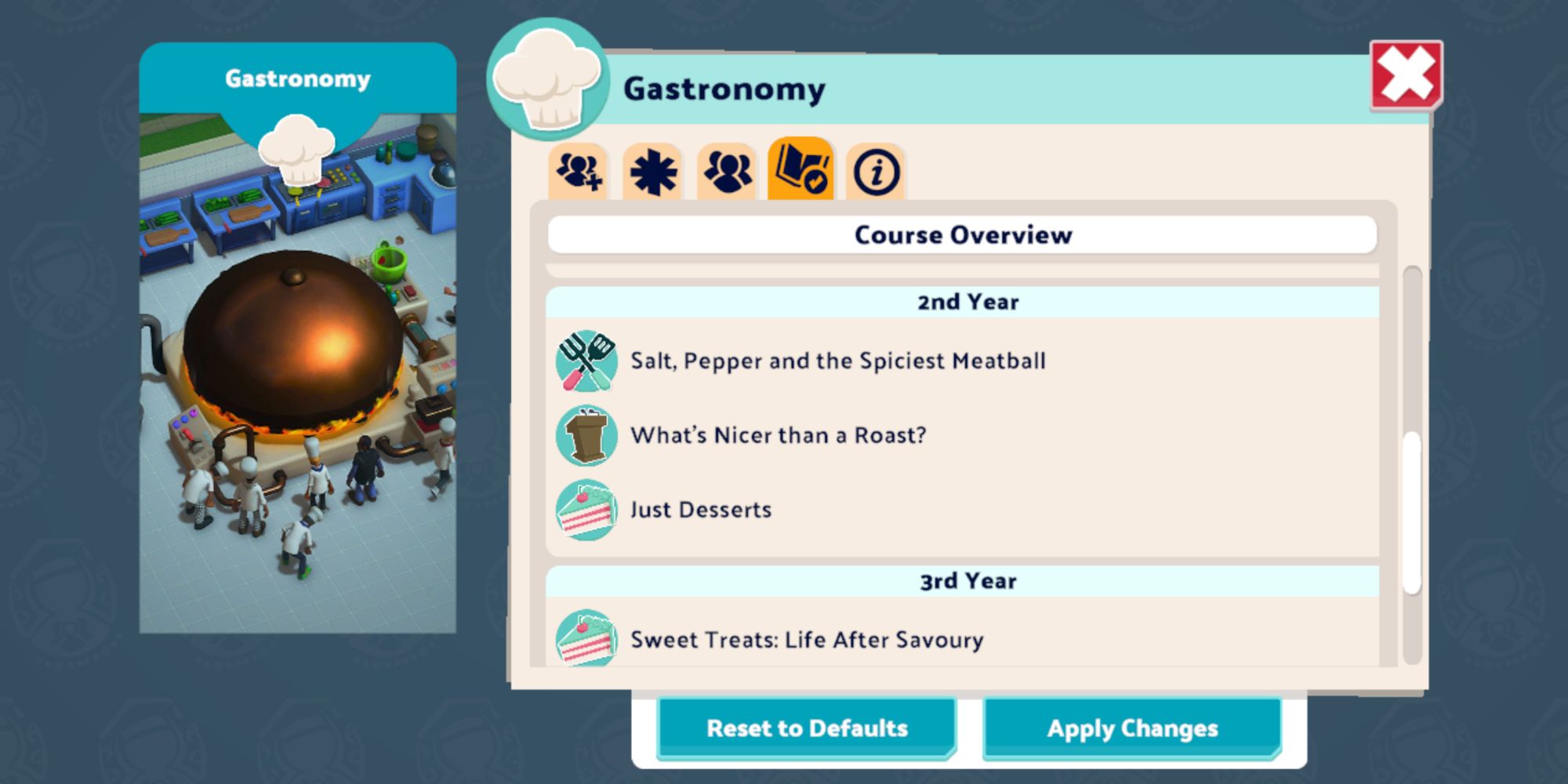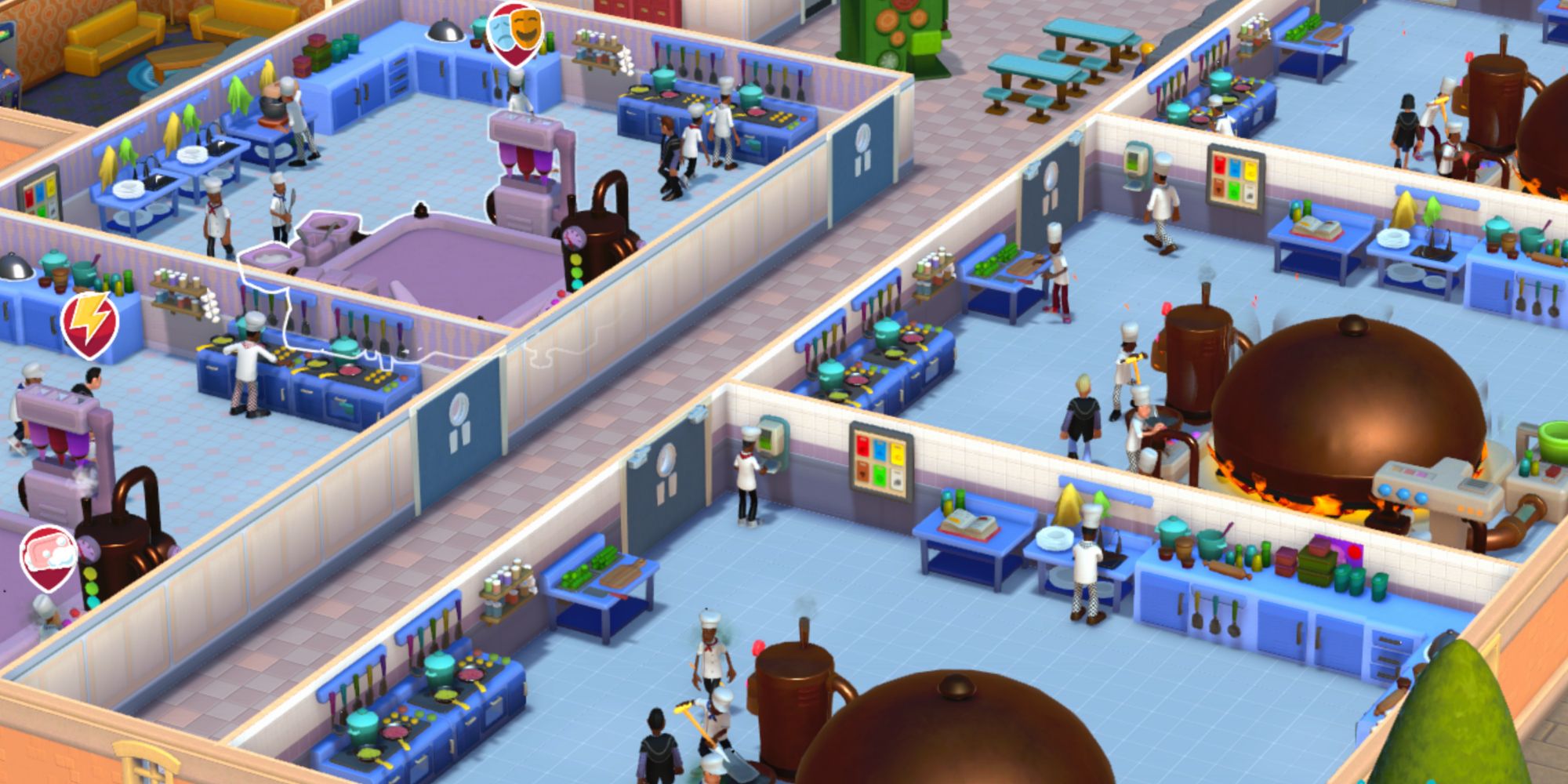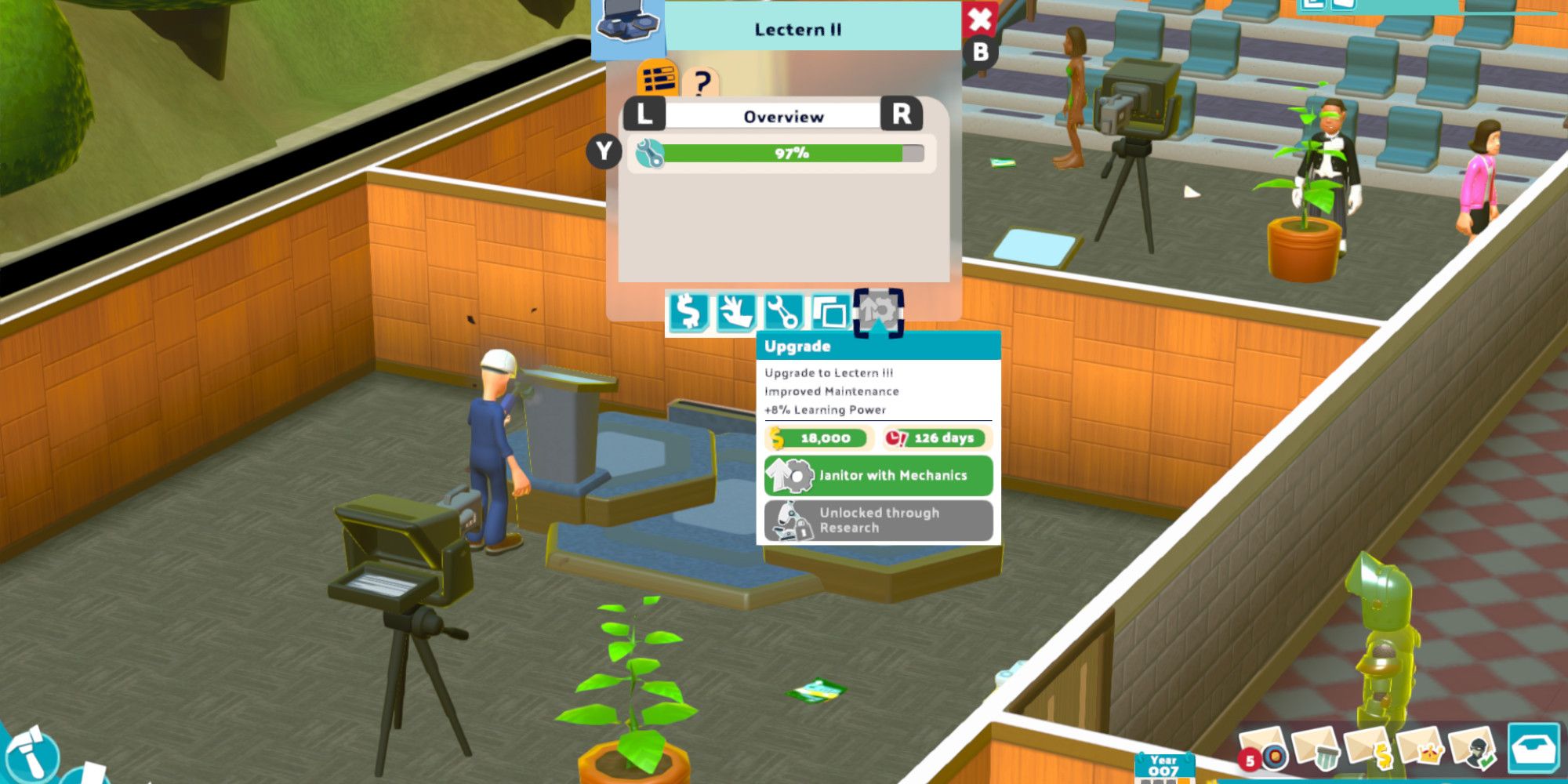Quick Links
Running your own university is turned into an incredibly fun job with Two Point Campus - you get to customize your campus to great extents, picking the courses you run, micromanaging your staff and your students, and decorating and landscaping as you see fit.
One of the first courses you'll encounter in the game is Gastronomy, a food-based course that you'll have to take on in the second level of the game: Piazza Lanatra. It has quite a few hefty requirements, but a legion of accomplished cooks and chefs will thank you if you manage to balance everything just right.
What Is Gastronomy?
You began the game running a Scientography course, the game's generic science course, but now we're getting specialized. Gastronomy is a thinly-veiled parody of food science and attracts only one type of student: culinary students who wear the iconic white chef's outfit.
You'll have to build quite a few rooms to satisfy Gastronomy students. You'll start out building Lecture Theatres and Savoury Kitchens, and end up requiring Sweet Kitchens and Science Labs. Naturally, you'll also need to employ some Gastronomy teachers. As you upgrade the course, you'll need even more classrooms and teachers.
As always, you'll also need a full complement of student and staff services. This means dorms, toilets, places to relax, and places to eat. Later on in the game, you'll also want Training Rooms and Research Labs, as well as Private Tuition Rooms, to help your best students excel and your worse students catch up.
Gastronomy Course Details
Gastronomy is a medium-difficulty course that has an average tuition fee of $9,000 - which really isn't that bad. You'll make a decent amount of money running this course. Of course, you can raise or lower your fees, though this will decrease or increase how many applicants you get year on year. There are three years to the course, each offering different classes.
You can upgrade the Gastronomy course up to a maximum level of ten. Upgrading a course primarily increases the number of students you attract, but it'll also raise the quality of the course, allowing students to reach higher qualification levels. This means more money bonuses every month!
The table below displays how many students will apply to the course if you keep the tuition fees at $9,000. Note that this doesn't include any additional students who may apply thanks to open days or random events:
|
Level 1 |
Level 2 |
Level 3 |
Level 4 |
Level 5 |
|---|---|---|---|---|
|
10 |
15 |
20 |
25 |
30 |
|
Level 6 |
Level 7 |
Level 8 |
Level 9 |
Level 10 |
|
35 |
40 |
45 |
50 |
55 |
If you lower your tuition fees, you can get a maximum of 60 applicants at level ten!
Thanks to the rigid timetabling system that Two Point Campus employs, you'll have to be wary of how many students you take on, how much space you have, and how many rooms you'll need to accommodate a full class load.
First, let's look at the three years that a Gastronomy student will undertake:
|
Room |
First Years |
Second Years |
Third Years |
|---|---|---|---|
|
Lecture Theatre |
1 Class |
1 Class |
N/A |
|
Savoury Kitchen |
2 Classes |
1 Class |
1 Class |
|
Sweet Kitchen |
N/A |
1 Class |
1 Class |
|
Science Lab |
N/A |
N/A |
1 Class |
To calculate how many rooms you’ll need, the game has a slightly complex equation. It does the following for each and every classroom in the game:
- First, it takes the number of first, second, and third-year students you have and then multiplies those numbers by the number of classes they take in that room. This is the total number of classes.
- It then divides that number by the maximum capacity of a classroom - eight.
- Finally, that number is divided by six, which is the number of classes each classroom can put on per year. Any decimals are rounded up.
Let's say that you have 24 first years and 17 second years, and you want to know how many Savoury Kitchens you'll need to fully accommodate them. First years have two Savoury Kitchen classes, making equalling 48 total classes. Second years only have one, so that's 17 classes. 24 plus 17 is 41 - divide that by eight and then that number by six. The end result is a number less than one, so you know you can get away with only one Savoury Kitchen for now, as long as you have enough of your other rooms to accommodate the timetable!
The game will always tell you how many extra classrooms you need whenever you're about to start a new school year - but it's handy to know the formula if you want to plan ahead. If you have a full cohort of 60 students in each year, you’ll need the following rooms for Gastronomy alone: three Lecture Theatres, five Savoury Kitchens, three Sweet Kitchens, and two Science Labs.
Gastronomy Course Equipment Required
As mentioned above, you will need – at a minimum – four different rooms to put on a Gastronomy course: a Lecture Theatre costing $21,300, a Savoury Kitchen costing $30,100, a Sweet Kitchen costing $35,100, and a Science Lab costing $18,200. Note that these are just minimums, and if you want to put on a successful course, you will likely need to invest far more money into these rooms and build a Library to let students complete assignments.
The sections below list all the optional items that you can acquire for the required rooms for the Gastronomy course. Endeavor to unlock them all, as many of them are required for students’ assignments, and many provide fantastic bonuses to learning rates. Some of these items may need to be researched in a Research Lab before you can purchase them.
Items in bold are optional items that Gastronomy students will eventually need to complete assignments. Note that some of them require a significant amount of Kudosh to unlock – aim to purchase these first, so you don’t get caught out with multiple students failing assignments.
Savoury Kitchen And Sweet Kitchen
These classrooms are quite expensive, but you won't have to build a Sweet Kitchen until your second year running the course.
|
Item |
Cost |
Kudosh |
|---|---|---|
|
Chopping Station |
600 |
N/A |
|
Mixing Station |
2,000 |
200 |
|
Cooking Station |
2,000 |
N/A |
|
Recipe Station |
600 |
N/A |
|
Washing Station |
750 |
N/A |
|
Container Cupboard |
500 |
N/A |
|
Culinary Fridge |
1,500 |
120 |
|
Food Groups Poster |
150 |
10 |
|
Hygiene Poster |
150 |
10 |
|
Spice Rack |
500 |
50 |
|
Corner Cupboard |
500 |
50 |
|
Equipment Cupboard |
500 |
50 |
Science Lab
Luckily, you won't need very many Science Labs at all if you're running a Gastronomy course, but it's handy to deck one out with all the things you need as future-proofing.
|
Item |
Cost |
Kudosh |
|---|---|---|
|
Science Shelf |
600 |
N/A |
|
Whiteboard |
100 |
N/A |
|
Science Station |
3,000 |
15 |
|
Experiment Station |
3,500 |
15 |
|
Microscope |
16,000 |
150 |
|
Thunder Balls |
30,000 |
85 |
|
Momentum Marbles |
25,000 |
30 |
|
Science Unit |
8,000 |
150 |
Library
While a Library can be useful for many different courses, the table below lists only the items that are both optional in general, yet required for Gastronomy assignments.
|
Item |
Cost |
Kudosh |
|---|---|---|
|
Gastronomy Bookcase |
6,000 |
100 |
|
Records Cubicle |
4,000 |
5 |
|
Textbook Cubicle |
400 |
N/A |
|
Computer Cubicle |
800 |
N/A |
Tips For Running A Gastronomy Course
While a Gastronomy course will take up a lot of real-estate thanks to the very large rooms required to make it successful, it has the potential to be a very good money maker. Here are some tips on optimizing everything:
- If you're running more than one course that requires Lecture Theatres, consider having some that only run Gastronomy classrooms and keep them close to your Kitchens. It's quite easy to make a Gastronomy 'wing' in this way.
- Conversely, thanks to the relatively sparse Science Lab requirements, Gastronomy makes a great companion course to other courses that utilize it, such as Scientography and Funny Business.
- Put a lot of investment into research and upgrades - this is a course that greatly benefits from upgrading your machinery. With students going to four different classrooms, making sure you upgrade your classroom equipment evenly will give you the best results.

